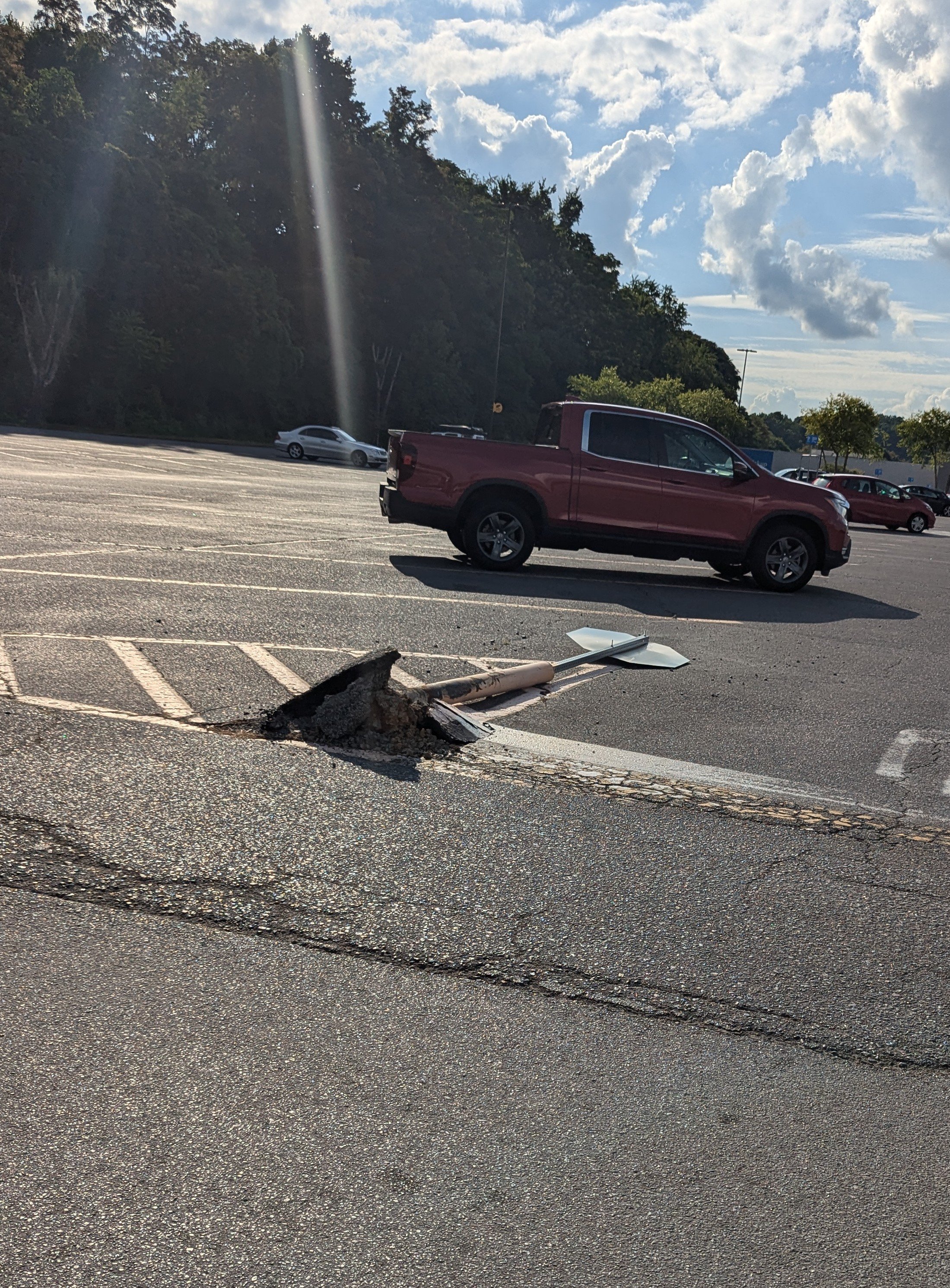Covering large parking lots with solar panels is an idea that goes back decades but in America at least it’s an idea that has never really taken off.
What is the reason for that? Is it due to the overall cost or is there something else that keeps Walmart, Target, Costco, Sams Club, Malls, etc. from covering their parking lots with these panels and selling the power?
Making the panels high enough off the ground with sparse enough supports to be convenient adds a lot of expense. I mainly see it in paid parking lots where the shade can be sold as a value add.
The supports also need to withstand being rammed by drunks in dodge rams.
I think Target and McDonald’s have figured out the solution to that: surround the supports with concrete pillars.

You underestimate the power of the Dodge Ram
I wish, we could at least make parking lots not pitch-black. They absorb so much heat in the sun, which makes them unpleasant to walk across and of course adds to cities being overly hot in general.
Two local shops here have their parking lots out of light gray paving stones, which is so much nicer. I’m guessing, they got forced to pave, so that rain water can drain, which is of course also quite a good idea…
in places that have large open lot retail developments, it’s very likely you could just install the solar panels on undeveloped land a few miles away.
why would you complicate both efforts by trying to intertwine them?
Or if you do them on site, there’s a roof on the store that you can use first, without needing to do construction work. Covering the parking spaces requires some measure of construction work, underground electrical work, etc that could end up being pretty expensive compared to alternatives.
That assumes the buildings can handle them. A company I used to work for was planning to put solar on pretty much all of their buildings. Until they found out most of their buildings couldn’t handle the weight without significant (expensive) reinforcing. Many of their installations ended up on the ground instead.
One of the Costco locations in Albuquerque has a solar covered parking lot. Inside they have a meter showing how much of their used electricity is from the solar.

Basically solar panels need structural support.
To cover a parking lot, you must build the supports from scratch. To cover an existing rooftop, the structure’s already there.
It’s slightly more complicated but that’s the basic reason.
Supports are nothing compared to the electrical infrastructure needed to actually use the solar power. Adding solar to a commercial 3 phase switchgear is a massive headache.
Installing and maintaining solar panels costs a lot. Perhaps the businesses found that not profitable.
In Hong Kong, we have a “install solar panels on your roof” project, and the electricity company buys the power you generate at approx. 5x market price. It sounds great at first, but people quickly realized installation and maintenance cost so much, you can only get back what you paid for after 10 years.
This may not be relevant to the discussion because we are talking about big space, and HK houses are small area-wise.
you can only get back what you paid for after 10 years.
Another way to look at it: It used to be 20-25 years, so 10 is probably the best it’s ever been for ROI.
Isn’t 10 years around the expected lifetime of a panel?
They’re usually rated 20-25, but I think I read recently that some are still producing useful power after that.
Read an article on an early adopter that had over 30 year panels. They reported it was still producing around 70% of its original rated power.